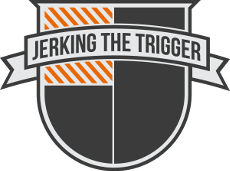I was lucky enough to be able to spend some quality time with the upcoming MagPod. MagPod provided me with a prototype that is already a few revisions old but I was able to get a very good idea of what the MagPod is all about.

The humble little MagPod is big on functionality.
I Don’t Care What You Were Told
First, like I did in my first MagPod post, lets take care of the elephant in the room. The MagPod is designed to allow shooters to use their Magpul PMAGs more efficiently as a mono-pod to steady their rifles in the prone position. So, it promotes resting the magazine on the deck which many people wrongly believe will cause their rifles to malfunction. This is simply not the case. It has been shown over and over by several instructors who teach this technique and oversee hundreds of thousands (if not millions) of rounds being sent down range that this is a valid technique that will not cause malfunctions with a quality magazine and quality rifle. There, I feel better.

This loop is perfect for extracting magazines from deep pouches.
Questions Answered
My time with the MagPod has been brief (but productive). I have enough time to get a good feel for how it functions. I do not have a lot of rounds on it but I do have a lot of rounds through ARs using the magazine mono-pod technique. In fact, I sold all my bipods but one a long time ago. There is just no reason to bother carrying the weight once you get used to this technique.
The biggest questions that I had were: Does it help when the rifle is held at angles other than perfectly level? Does it really add stability beyond what a standard PMAG baseplate provides? Does it function well as a magazine manipulation aid? How is it on uneven ground? Does it make the rifle sit too high off the ground? I am happy to say that my impressions were positive on all questions.
While the MagPod does have the most contact area when the rifle is held level, it does provide improved stability when the rifle is angled up or down as well. It is made from a hard plastic with a hard rubber pad on the base. This set up seems to have some give to conform to various surfaces and angles.

Lots of contact area but also enough of a gap to handle uneven surfaces.
It is noticeably more stable than when using a PMAG without the MagPod installed – the carbine just seems to rest more naturally with the MagPod in place. The extra stability is subtle at some angles but noticeable.
I think my biggest surprise was how well the MagPod worked as a magazine manipulation aid. The hole through the front of MagPod is positioned perfectly to allow use of your index finger to pull the magazine out of a pouch. The aggressive texture on the sides is a great grip enhancer for those who “beer can” grip their magazines when yanking a magazine free of the magwell (especially when clearing a double feed).
The design of the MagPod was obviously made to handle uneven ground. There is a front and rear pad that make contact with the ground with a small gap between them. This gap allows the MagPod to span debris like gravel and still stay relatively stable.
The concerns that I have read from some concerned onlookers about making the rifle sit dangerously high off the ground are unfounded. When level, the rifle is only about 1/8″-3/16″ of an inch higher off the ground than it would be with a standard PMAG baseplate. I will take that slight height increase as a trade off for more stability and more positive manipulation.

How stable is it? Stable enough to balance your rifle on the magazine with ease.
Conclusion
I like to think of the MagPod as a tool that is similar to a MagPul Ranger Plate but with twice the functionality. It provides improved handling of the magazine in a variety of grips and it also has the huge bonus of making a very stable shooting platform. I thought I was impressed before I tried it. I am even more impressed now that I have been able to experience the nuances of the MagPod.
The MagPod will be available soon. While you are waiting, check out MagPod on their website and their Facebook page.









